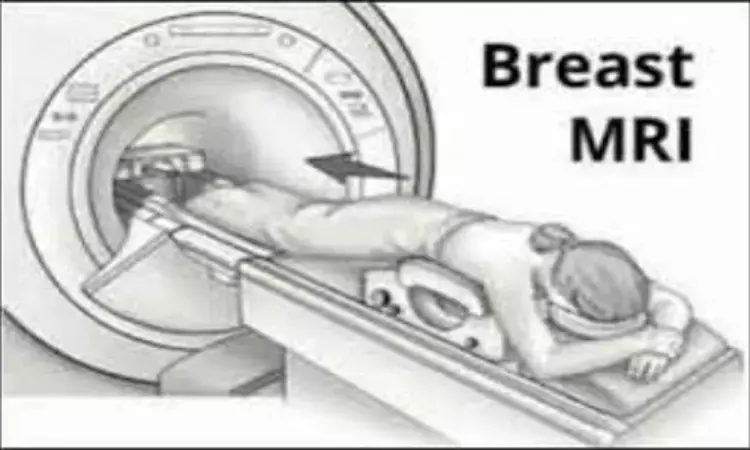- Home
- Medical news & Guidelines
- Anesthesiology
- Cardiology and CTVS
- Critical Care
- Dentistry
- Dermatology
- Diabetes and Endocrinology
- ENT
- Gastroenterology
- Medicine
- Nephrology
- Neurology
- Obstretics-Gynaecology
- Oncology
- Ophthalmology
- Orthopaedics
- Pediatrics-Neonatology
- Psychiatry
- Pulmonology
- Radiology
- Surgery
- Urology
- Laboratory Medicine
- Diet
- Nursing
- Paramedical
- Physiotherapy
- Health news
- Fact Check
- Bone Health Fact Check
- Brain Health Fact Check
- Cancer Related Fact Check
- Child Care Fact Check
- Dental and oral health fact check
- Diabetes and metabolic health fact check
- Diet and Nutrition Fact Check
- Eye and ENT Care Fact Check
- Fitness fact check
- Gut health fact check
- Heart health fact check
- Kidney health fact check
- Medical education fact check
- Men's health fact check
- Respiratory fact check
- Skin and hair care fact check
- Vaccine and Immunization fact check
- Women's health fact check
- AYUSH
- State News
- Andaman and Nicobar Islands
- Andhra Pradesh
- Arunachal Pradesh
- Assam
- Bihar
- Chandigarh
- Chattisgarh
- Dadra and Nagar Haveli
- Daman and Diu
- Delhi
- Goa
- Gujarat
- Haryana
- Himachal Pradesh
- Jammu & Kashmir
- Jharkhand
- Karnataka
- Kerala
- Ladakh
- Lakshadweep
- Madhya Pradesh
- Maharashtra
- Manipur
- Meghalaya
- Mizoram
- Nagaland
- Odisha
- Puducherry
- Punjab
- Rajasthan
- Sikkim
- Tamil Nadu
- Telangana
- Tripura
- Uttar Pradesh
- Uttrakhand
- West Bengal
- Medical Education
- Industry
Textural analysis in breast MRI improves diagnostic accuracy, finds study

Cincinnati, OH: MRI textural analysis (TA) is helpful in differentiating malignant from being axillary lymph nodes in women with breast cancer, suggests a recent study in the Journal of Breast Imaging.
Rifat A Wahab, University of Cincinnati Medical Center, Department of Radiology, Cincinnati, OH, and colleagues conducted the study to determine the diagnostic accuracy of MRI TA to differentiate malignant from benign axillary lymph nodes in breast cancer patients.
The researchers conducted an institutional review board-approved retrospective study of axillary lymph nodes in breast cancer women who underwent ultrasound-guided biopsy and contrast-enhanced (CE) breast MRI from January 2015 to December 2018. TA of axillary lymph nodes was performed on 3D dynamic CE T1-weighted fat-suppressed, 3D delayed CE T1-weighted fat-suppressed and T2-weighted fat-suppressed MRI sequences. Areas under the curve (AUC) were calculated using receiver operating characteristic curve analysis to distinguish between malignant and benign lymph nodes.
Read Also: Breast screening: Digital mammography no good than film
Key findings of the study include:
- Twenty-three biopsy-proven malignant lymph nodes and 24 benign lymph nodes were analyzed.
- The delayed CE T1-weighted fat-suppressed sequence had the greatest ability to differentiate malignant from benign outcome at all spatial scaling factors, with the highest AUC (0.84–0.93), sensitivity (0.78 [18/23] to 0.87 [20/23]), and specificity (0.76 [18/24] to 0.88 [21/24]).
- Kurtosis on the 3D delayed CE T1-weighted fat-suppressed sequence was the most prominent TA parameter differentiating malignant from benign lymph nodes.
"This study suggests that MRI TA could be helpful in distinguishing malignant from benign axillary lymph nodes. Kurtosis has the greatest potential on 3D delayed CE T1-weighted fat-suppressed sequences to distinguish malignant and benign lymph nodes," concluded the authors.
Read Also: Higher Breast density asymmetry linked to greater breast cancer risk
The study, "Textural Characteristics of Biopsy-proven Metastatic Axillary Nodes on Preoperative Breast MRI in Breast Cancer Patients: A Feasibility Study," is published in the Journal of Breast Imaging.
Dr Kamal Kant Kohli-MBBS, DTCD- a chest specialist with more than 30 years of practice and a flair for writing clinical articles, Dr Kamal Kant Kohli joined Medical Dialogues as a Chief Editor of Medical News. Besides writing articles, as an editor, he proofreads and verifies all the medical content published on Medical Dialogues including those coming from journals, studies,medical conferences,guidelines etc. Email: drkohli@medicaldialogues.in. Contact no. 011-43720751


